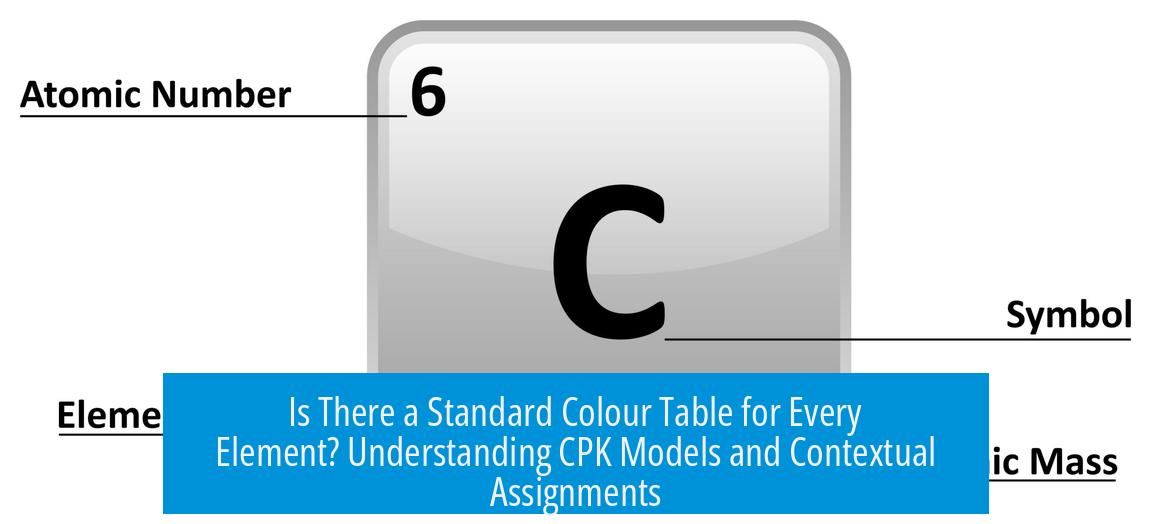Is There a Standard Colour for Every Element?
There is no universal or official periodic table that assigns a fixed, standard colour to every chemical element like H = red or Na = purple. Colour representations vary by context, software, and tradition rather than by an agreed standard.
Why No Universal Colour Standard Exists
Chemical elements do not have fixed “standard” colours recognized internationally. Colours are often chosen for clarity in diagrams or models. Different scientific software or textbooks may assign their own colour codes based on preference or usability. This variation prevents the establishment of a single universal colour scheme covering all 118 elements.
Common Colour Scheme: The CPK Model
The most widely recognized approach to colour coding elements in molecular models is the CPK colour scheme. It is well-known but not mandatory. It assigns typical, intuitive colours to common elements:
- Hydrogen (H): White
- Carbon (C): Black
- Oxygen (O): Red
- Nitrogen (N): Blue
- Chlorine (Cl): Green
The CPK scheme originated from physical molecular models created by Corey, Pauling, and Koltun. It helps scientists and students quickly identify elements in organic and biochemistry visuals. However, it covers mainly common elements and leaves many lesser-used elements without established colours.
Colour Assignments Depend on Context
In software or diagrams, users can customize element colours to highlight specific features. For example, choosing purple for sodium (Na) is a user or program-specific decision rather than an accepted universal standard. Some applications adapt colours to functional groups or chemical environments, improving comprehension.
Practitioners learn common element colours by exposure and context, such as recognizing oxygen as red due to its presence in ketones or water in typical models.
Summary
- No official periodic table assigns fixed standard colours to every element.
- The CPK colour scheme is the most common but non-mandatory standard for element colours.
- Colour assignments vary by software, diagram style, and user preference.
- Knowledge of element colours forms through contextual learning rather than a universal chart.
For further detail, the Wikipedia page on CPK colouring offers a comprehensive overview of colour schemes in chemical modelling.
Is there an official periodic table listing the standard colour for every element?
No universal standard colour scheme exists for all elements. Colours often vary depending on software or user choice rather than a fixed chart. There is no official table assigning specific colours to every element.
What is the most common colour scheme used for elements?
The CPK colour scheme is widely used. It assigns typical colours to elements, like oxygen in red and nitrogen in blue. However, it is not mandatory and some variations exist between sources.
Why do element colours differ in molecular diagrams?
Colours often depend on the software defaults or the author’s preferences. For example, some may use purple for sodium while others may choose different hues. Context, like nearby functional groups, can guide colour choices.
Can one identify elements by colour alone in chemical structures?
Colour helps but is not definitive alone. Recognizing patterns and functional groups alongside colour is essential to correctly assign element identities in diagrams.
Where can I find more details on standard colour schemes like CPK?
Reference pages like the Wikipedia article on CPK colouring offer overviews of commonly used schemes. These resources explain typical colour assignments and their variations.





Leave a Comment